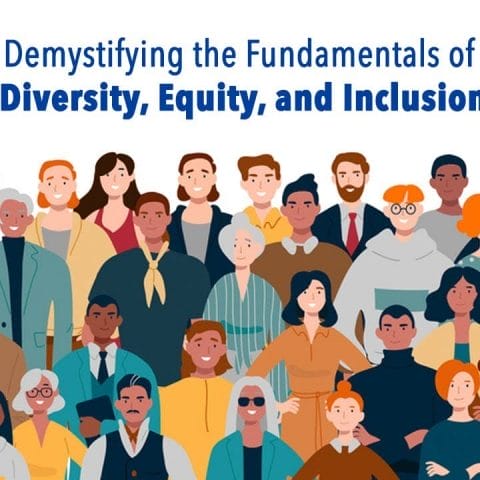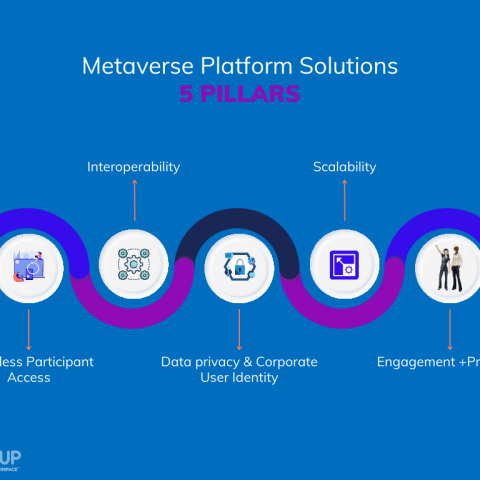Did you know that organizations with diverse workforces outperform their peers by 33%? Embracing diversity is not only a moral imperative but also a strategic advantage in today’s globalized world. To cultivate an inclusive work environment and maximize the potential of diverse teams, organizations must prioritize diversity training.
Diversity training is intentional professional training designed to develop the skills needed to work and interact with people from diverse cultural backgrounds. It serves a vital purpose in boosting participants’ awareness about different types of diversity, appreciating differences among co-workers, and providing knowledge and strategies to enhance employees’ interpersonal and communication skills.
Join us as we delve into the importance, objectives, benefits, and elements of successful diversity training. We will also explore how organizations can build effective diversity and inclusion strategies and the impact of culture on diversity and inclusion efforts. Get ready to create inclusive workplaces and unlock the full potential of your workforce!
Key Takeaways:
- Diversity training is essential for organizations to foster inclusive work environments and maximize potential.
- Its purpose is to boost awareness, appreciation, and skills needed to work with diverse cultural backgrounds.
- Organizations with diverse workforces outperform their peers by 33%.
- Diversity training prevents civil rights violations and improves teamwork and communication.
- Embracing diversity and inclusion leads to better employee satisfaction, retention, and financial success.
Importance of Diversity Training in the Workplace
Diversity training plays a crucial role in today’s organizations for multiple reasons. Not only does it help companies attract top talent and maximize profits, but it also ensures compliance with moral and legal standards. By participating in diversity training, employees can develop and enhance essential leadership skills, fostering a more inclusive and welcoming work environment.
One of the key benefits of diversity training is that it equips participants with the knowledge and understanding of diversity-related issues. Employees gain insights into different cultures, backgrounds, and perspectives, enabling them to navigate interpersonal relationships and communication more effectively. Moreover, diversity training allows organizations to disseminate information about their diversity-related policies, ensuring that all employees are aware of and aligned with the company’s commitment to inclusion.
Diversity training has a positive impact on workplace dynamics, fostering a more inclusive and welcoming environment for employees.
Additionally, diversity training enhances management effectiveness. It equips managers with the skills and tools needed to handle diverse teams, promoting better decision-making, conflict resolution, and collaboration. As a result, organizations benefit from improved teamwork, productivity, and overall performance.
Diversity training has far-reaching implications. It helps organizations create a culture that celebrates diversity and empowers individuals to bring their authentic selves to work. By embracing diversity and inclusion, businesses can foster innovation, creativity, and a competitive edge in an ever-evolving global market.
Understanding the importance of diversity training is vital for organizations committed to fostering an inclusive workplace where everyone feels valued and respected. By investing in diversity training programs, businesses can unlock the full potential of their workforce, building a stronger, more resilient, and more successful organization.
Explore more about the benefits and strategies of diversity training in the workplace here.
Objectives of Diversity Training

Diversity training serves a paramount purpose in fostering inclusive workplaces and developing a culture of acceptance and respect. The objectives of diversity training encompass a range of goals that contribute to building a harmonious work environment and nurturing diversity and inclusion.
Enhancing awareness and understanding of different types of diversity: Diversity training aims to broaden participants’ knowledge and appreciation of the various dimensions of diversity, including race, ethnicity, gender, sexual orientation, socio-economic status, and more. By deepening awareness, individuals can recognize and embrace the unique perspectives and experiences that each person brings to the table.
Promoting appreciation and respect for differences: One of the key objectives of diversity training is to foster a culture of appreciation and respect for diverse backgrounds, experiences, and viewpoints. Participants learn to value the strengths and contributions of individuals from different backgrounds, creating a more inclusive and supportive work environment.
Developing skills for effective communication and collaboration across diverse groups: Diversity training equips employees with the necessary tools and skills to communicate and collaborate effectively with individuals from diverse backgrounds. By enhancing cross-cultural communication skills, participants can bridge potential gaps and build stronger relationships, promoting teamwork and productivity.
Preventing discrimination and creating equal opportunities: Diversity training plays a crucial role in preventing discrimination and promoting equal opportunities within the workplace. Through education and awareness, participants gain insights into the impact of biases and stereotypes, enabling them to challenge and eliminate discriminatory behaviors and practices.
“Diversity training helps organizations create a safe and inclusive environment where employees can thrive and contribute their best, regardless of their background or identity.”
Fostering a more inclusive work environment: The ultimate goal of diversity training is to cultivate a work environment where all employees feel valued, included, and supported. By nurturing inclusivity, organizations can harness the full potential of their diverse workforce, leading to greater innovation, creativity, and productivity.
Research and studies have consistently highlighted the positive impact of diversity training initiatives on organizations, employees, and overall business performance. According to a study published on NCBI, diversity training positively influenced employees’ attitudes and behaviors, resulting in increased job satisfaction, reduced prejudice, and improved cross-cultural interactions.
By focusing on the objectives of diversity training, organizations can create a more inclusive and harmonious workplace, where individuals from diverse backgrounds can thrive and contribute to their fullest potential.
Benefits of Diversity Training
Diversity training offers a wide range of valuable benefits for both individuals and organizations. By participating in diversity training programs, employees can develop essential skills and gain a deeper understanding of cultural competence, empathy, and perspective-taking, all of which contribute to creating a more inclusive and harmonious work environment.
A key advantage of diversity training is its positive impact on teamwork and collaboration. Effective communication is enhanced, reducing conflicts and fostering better working relationships among employees from diverse backgrounds. When individuals feel heard, respected, and understood, they are more likely to work together seamlessly and leverage their diverse perspectives and experiences for innovative solutions and decision-making.
Diversity training also plays a significant role in increasing employee satisfaction, engagement, and retention. When employees are provided with opportunities to learn about and appreciate different cultures, they feel valued and included, resulting in higher job satisfaction. Furthermore, employees who feel supported and respected are more likely to remain with the organization, leading to greater continuity and stability within the workforce.
From an organizational perspective, diversity training contributes to improved decision-making, creativity, innovation, and overall performance. By fostering an inclusive culture that values diversity, organizations can tap into a broader range of perspectives and ideas. This diversity of thought leads to more informed decision-making processes, increased creativity and innovation, and ultimately, improved performance and competitiveness in the marketplace.
In summary, diversity training offers numerous advantages to individuals and organizations alike. It empowers employees with valuable skills, enhances teamwork and collaboration, boosts employee satisfaction and retention, and drives organizational performance and innovation.
Elements of Successful Diversity Training

Successful diversity training incorporates various essential elements to create an effective and impactful learning experience. By integrating these elements, organizations can maximize the diversity training effectiveness and achieve their desired outcomes. Here are the key elements that contribute to successful diversity training:
Clear Objectives and Learning Outcomes
Effective diversity training begins with well-defined objectives and learning outcomes. These objectives should encompass both knowledge acquisition and behavioral change. By setting clear expectations, participants can better understand the purpose of the training and actively engage in the learning process.
Active Understanding and Perspective-changing
Diversity training should go beyond passive learning and encourage active understanding. It should empower participants to challenge their preconceptions, develop empathy, and gain new perspectives on diversity-related issues. By fostering a mindset of growth and openness, diversity training can lead to meaningful transformation and attitudinal change.
Reflection and Realization of Diversity’s Importance
Reflection is a crucial aspect of diversity training. It allows participants to introspect on their biases, prejudices, and privileges, fostering self-awareness and promoting personal growth. Through reflection, participants can recognize the importance of diversity in creating inclusive and equitable environments.
Effective Methodologies and Delivery Formats
Choosing the right methodologies and delivery formats is vital for effective diversity training. The training program should utilize diverse instructional techniques such as interactive exercises, case studies, simulations, and group discussions. This variety keeps participants engaged and caters to different learning styles.
Creating a Safe and Supportive Environment
Creating a safe and supportive environment is essential for fostering open dialogue and addressing conflictive topics. Participants should feel comfortable expressing their thoughts, concerns, and experiences without fear of judgment or reprisal. This inclusive atmosphere encourages open-mindedness and facilitates meaningful conversations.
Trainer Expertise, Skills, and Attitudes
The experience, skills, and attitudes of the trainer greatly influence the effectiveness of diversity training. A skilled trainer who possesses expertise in diversity and inclusion can guide participants through their learning journey, facilitate transformative experiences, and facilitate productive discussions. The trainer’s attitude of respect, empathy, and inclusivity sets the tone for the entire training program.
By incorporating these elements into diversity training initiatives, organizations can enhance the overall learning experience, cultivate a more inclusive workplace culture, and promote diversity and inclusion.
Building an Effective D&I Strategy
Building an effective diversity and inclusion (D&I) strategy is crucial for organizations committed to fostering an inclusive and equitable work environment. Here are key steps to building an effective D&I strategy that drives positive change:
1. Gain Senior-Level Sponsorship and Commitment
A successful D&I strategy requires the active involvement and commitment of senior leaders within the organization. By gaining their sponsorship, you can ensure that D&I initiatives receive the necessary resources and support for long-term success.
2. Integrate D&I into All Aspects of the Organization
Building an effective D&I strategy means embedding diversity and inclusion principles into every facet of the organization. This includes recruitment processes, training and development programs, employee resource groups, recognition and rewards systems, as well as corporate branding strategies.
“Diversity is about all of us, and about us having to figure out how to walk through this world together.” – Jacqueline Woodson
3. Establish a Culture of D&I
A comprehensive D&I strategy goes beyond policy statements. It requires creating a culture that embraces diversity and fosters inclusivity. This can be achieved through employee education and awareness initiatives, as well as promoting open dialogue and transparency about D&I issues within the organization.
4. Foster Proactive Endorsement and Support
Leaders at every level of the organization should actively endorse and support D&I initiatives. Encouraging proactive engagement and providing opportunities for employees to contribute to the D&I agenda will help create a sense of ownership and drive the strategy forward.
5. Measure and Monitor Progress
Tracking the progress of your D&I strategy is essential to evaluate its effectiveness. Implement measurement mechanisms, such as employee surveys or diversity metrics, to gain insights, identify areas for improvement, and celebrate milestones along the way.
6. Continuously Evolve and Adapt
The journey towards building an effective D&I strategy is ongoing. It is important to continuously assess and evolve your approach to ensure it remains relevant and aligned with the changing needs of your workforce and society as a whole.
By following these steps, organizations can build effective D&I strategies that promote inclusivity, diversity, and equality throughout their operations.
Understanding the Impact of Culture on D&I

Culture plays a significant role in diversity and inclusion (D&I) efforts within organizations. A diverse workforce not only reflects the communities they serve but also brings different cultural perspectives that enhance decision-making and problem-solving abilities. By integrating D&I into core strategies, business leaders can tap into culturally diverse talent pools and leverage cultural norms for more effective product positioning and branding.
Lack of diversity and inclusion can have negative impacts on organizations. It can lead to lower profitability due to limited perspectives and missed opportunities for innovation. In contrast, embracing diversity and inclusivity can bring multiple benefits, such as increased creativity, better decision-making, and improved employee engagement.
The Role of Cultural Norms
Cultural norms have a profound influence on D&I efforts. Understanding and respecting cultural differences are crucial for fostering an inclusive environment. Organizations need to recognize that cultural norms shape individuals’ experiences, behaviors, and communication styles. By embracing diversity and fostering cultural competence, organizations can leverage the strengths that different cultural backgrounds bring to the table.
“Diversity is not about how we differ. Diversity is about embracing one another’s uniqueness.” – Ola Joseph
The Globalized World
In today’s globalized world, organizations must recognize the importance of embracing diversity to thrive. As businesses expand their reach into diverse markets, understanding cultural norms becomes vital for effective communication and successful market positioning. By promoting diversity and inclusion, organizations can build stronger connections with customers, clients, and partners from various cultural backgrounds.
The Business Case for D&I
There is a strong business case for diversity and inclusion. Research shows that diverse teams outperform homogeneous ones, leading to increased innovation, better problem-solving, and improved financial performance. By creating an inclusive culture that values diversity, organizations can attract top talent, retain employees, and gain a competitive advantage in the marketplace.
| Benefits of Embracing Diversity | Negative Impact of Lack of Diversity |
|---|---|
|
|
By recognizing and valuing cultural diversity, organizations can create a more inclusive and equitable work environment. This, in turn, contributes to employee satisfaction, retention, and overall success.
Implementing D&I at Scale
Implementing diversity and inclusion (D&I) initiatives on a large scale can be a daunting task, especially for organizations with geographically dispersed workforces. However, by following effective strategies, it is possible to cultivate broad-based diversity and inclusion throughout the organization.
A key aspect of implementing D&I at scale is creating an inclusive environment where everyone has a voice and feels safe to share their unique ideas and perspectives. This involves fostering a culture of empowerment where all employees are encouraged to make decisions that contribute to the organization’s success.
Furthermore, acknowledging and valuing the contribution of every individual is critical to building a culture of inclusion. Providing constructive feedback and acting on practical feedback and ideas from employees are essential components of this process.
To successfully scale diversity and inclusion efforts globally, organizations should consider implementing diverse leadership teams. Setting goals for diverse leadership can help drive change throughout the organization and ensure that decision-making is representative of the diverse workforce. Moreover, leadership development programs can help cultivate and nurture a pipeline of diverse leaders who can champion D&I initiatives.
Establishing grassroots employee representative networks can also contribute to the successful implementation of D&I at scale. These networks serve as a platform for employees to voice their concerns, share their experiences, and participate in shaping the organization’s D&I strategy.
It is important to note that implementing D&I at scale requires a comprehensive approach that addresses various aspects of the organization, from recruitment to training and development, employee resource groups, recognition and rewards, and even corporate branding. By integrating D&I into all these areas, organizations can ensure a holistic and impactful D&I strategy.
In conclusion, implementing diversity and inclusion at scale is a complex yet rewarding endeavor for organizations. By creating an inclusive environment, acknowledging everyone’s contribution, and setting goals for diverse leadership, organizations can foster a culture of diversity and inclusion that permeates all levels of the organization. To learn more about the importance of diversity and inclusion, you can visit this McKinsey article on how inclusion matters.
Conclusion
Diversity training serves a vital purpose in fostering inclusive workplaces and enhancing team dynamics. It helps organizations create a positive work environment, prevent discrimination, and improve overall performance. By understanding the objectives and benefits of diversity training, organizations can develop effective strategies and implement them at scale. Embracing diversity and inclusion leads to better employee satisfaction, retention, and productivity, as well as financial success.
Hyperspace, our company, offers DEIA training that can assist organizations in achieving their diversity and inclusion goals. With our comprehensive training programs, organizations can equip their employees with the skills and knowledge necessary to navigate diverse cultural backgrounds, communicate effectively, and collaborate in a multicultural work environment. Our training is designed to create awareness, promote respect for differences, and foster a sense of belonging for all employees.
By investing in diversity training and actively promoting diversity and inclusion, organizations can not only meet ethical and legal requirements but also unlock the full potential of their workforce. Through inclusive practices, organizations can leverage diverse perspectives, experiences, and ideas to drive innovation and achieve sustainable growth. Diversity training is an ongoing journey, and by partnering with Hyperspace, organizations can take meaningful steps towards creating a more inclusive future.
FAQ
What is the purpose of diversity training?
The purpose of diversity training is to boost participants’ awareness about different types of diversity, appreciate differences among co-workers, and provide knowledge and strategies to enhance employees’ interpersonal and communication skills. Diversity training also helps prevent civil rights violations, increase the inclusion of different identity groups, promote better teamwork, and create a more inclusive work environment.
Why is diversity training important in the workplace?
Diversity training is important in the workplace for several reasons. It helps organizations attract talent and maximize profits, comply with moral and legal standards, develop leadership and essential skills, disseminate information about diversity-related issues and organizational policies, and improve management effectiveness. Additionally, diversity training has a positive impact on workplace dynamics, fostering a more inclusive and welcoming environment for employees.
What are the objectives of diversity training?
The objectives of diversity training are to enhance awareness and understanding of different types of diversity, promote appreciation and respect for differences, develop skills for effective communication and collaboration across diverse groups, prevent discrimination and create equal opportunities, and foster a more inclusive work environment where all employees feel valued and supported.
What are the benefits of diversity training?
Diversity training brings numerous benefits to individuals and organizations. It helps employees develop cultural competence, empathy, and perspective-taking skills. It improves teamwork and collaboration by enhancing communication and reducing conflicts. Diversity training also leads to increased employee satisfaction, engagement, and retention, as employees feel valued and included. From an organizational perspective, diversity training contributes to improved decision-making, creativity, innovation, and overall performance.
What are the elements of successful diversity training?
Successful diversity training involves clear objectives and learning outcomes, facilitation of active understanding, perspective-changing, reflection, and realization of diversity’s importance. The design and implementation of the training program consider effective methodologies and delivery formats, such as diversity setting with perspective-taking and diversity training with goal setting. Creating a safe and supportive environment for participants to discuss conflicting topics is also crucial. The experience, skills, and attitudes of the trainer play a vital role in guiding the participants’ journey and fostering growth.
How can organizations build an effective D&I strategy?
Building an effective D&I strategy requires senior-level sponsorship and commitment. It involves planning, organizing, and allocating resources to establish a culture of diversity and inclusion (D&I). Leadership buy-in is crucial, and the D&I strategy should be integrated into all aspects of the organization, including recruitment, training and development, employee resource groups, recognition and rewards, and corporate branding. A comprehensive D&I strategy goes beyond policy statements and requires proactive endorsement and support from leaders at every level.
What is the impact of culture on D&I?
Culture plays a significant role in diversity and inclusion efforts. A diverse workforce helps organizations succeed by reflecting the communities they serve and benefiting from different cultural perspectives. Integrating D&I into core strategies allows business leaders to tap into culturally diverse talent pools and leverage cultural norms for more targeted product positioning and branding. Lack of diversity and inclusion can have negative impacts, leading to lower profitability and missed opportunities for innovation. Understanding cultural norms and embracing diversity helps organizations thrive in today’s globalized world.
How can organizations implement D&I at scale?
Implementing D&I at scale can be challenging, especially in geographically dispersed workforces. However, it is not impossible. Cultivating broad-based diversity requires creating an inclusive environment where everyone has a voice, feels safe to share novel ideas, and is empowered to make decisions. It also involves acknowledging everyone’s contribution and providing constructive feedback and acting on practical feedback and ideas from employees. To scale diversity globally, organizations can set goals for diverse leadership teams, implement leadership development programs, and establish grassroots employee representative networks.





